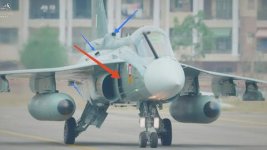The HF 24 has a German design and performs more ground attack missions on the battlefield due to its weak engines. Basically no supersonic flight,Please do not make idiotic arguments. It's common sense.
View attachment 32826

HAL HF-24 Marut - Wikipedia
en.m.wikipedia.org
China also has a more mature Q 5




